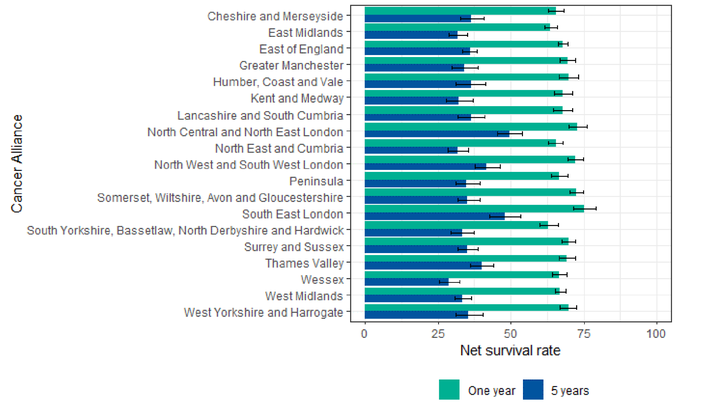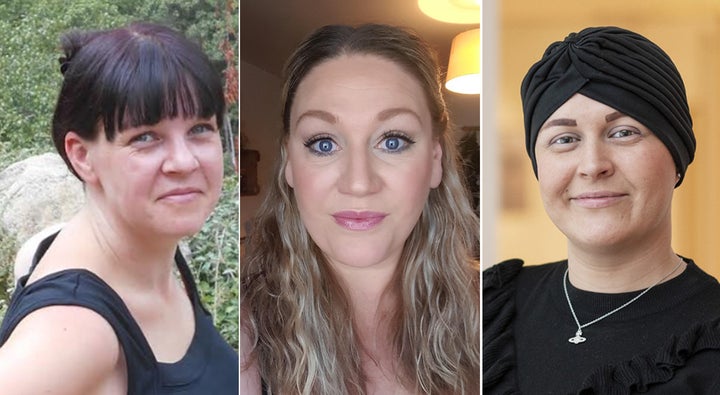
Being diagnosed with ovarian cancer is a postcode lottery, new research reveals, with “significant variation” across England for how quickly the disease is caught and treated.
Women in some parts of the country are twice as likely to be diagnosed with ovarian cancer than others, the NHS data shows.
There is also variation in the number of women diagnosed with early stage cancer, when the disease is most treatable. At the moment, just 33% of women with ovarian cancer are diagnosed at stage I or II.
The report, released by Public Health England, in partnership with a number of cancer charities, also paints a damming picture of survival rates across England.
When looking at the data from 19 different areas, 62.9% of patients survived for at least one year in some areas, compared to 75.2% in others. Shockingly, five-year survival rate varied from 28.6% to 49.6%.

HuffPost UK previously spoke to women in their thirties who say they had to fight to be diagnosed with ovarian cancer, because their symptoms were dismissed as “women’s problems” by GPs. Two of the women were also told they were “too young” to have ovarian cancer, which was incorrect: although the disease is most common in women over 50, it does affect younger women, too.
Ali Coates, from Gloucestershire, was diagnosed aged 36 after repeated GP visits before she was finally referred to a specialist.
“I went to to my GP and they said they thought it was either IBS or indigestion, but I kept saying that it was really painful,” she said. “One doctor, who was a locum, said: ‘This is just something that happens to women as they get older.’”
Claire Thompson, from Conway, was also diagnosed aged 36, but says she was repeatedly told her symptoms (including heavy bleeding that soaked through incontinence pads) were a result of giving birth.
“No matter how many times I went back they kept saying ‘you’ve just had a baby, your body has changed.’” she said.
Meanwhile Lauren Ridgard, from Manchester, was diagnosed aged 31 and had a good experience with her GP, who swiftly referred her for more testing. However, an admin mix-up with her referral meant her ultrasound scan and treatment were delayed.

The latest PHE report suggests a number of potential reasons why diagnosis rate, diagnosis time and survival rate varies by region.
Those cited include “differences in diagnostic pathways between regions, varying patterns of the time taken for patients to seek to consult their GP after first experiencing symptoms, inequality in ease of access in primary care to consult a GP for assessment of symptoms, variations in referral practices amongst GPs, and regional differences in primary care access to investigations such as ultrasound”.
The data has been analysed taking age into account, factoring in that there will be higher rates of ovarian cancer in areas with an older population. But the data is not adjusted for ethnicity or prescription rates of the contraceptive pill, so more research is needed to see how these variables might impact rates.
Commenting on the report, chief executive of Ovarian Cancer Action, Cary Wakefield, said: “Diagnosing ovarian cancer at the earliest stages is crucial, but sadly as we gather data it is clear that a postcode lottery exists around the country, with some areas diagnosing significantly more patients early than others. We want to see all patients diagnosed early enough to get treatment and survive this disease, no matter where they live.”
The chief executive of Target Ovarian Cancer, Annwen Jones, added: “We have consistently called on the government to fund a full ovarian cancer audit, and as the results from this pilot are published, look forward to working with the new government on taking this forward.”